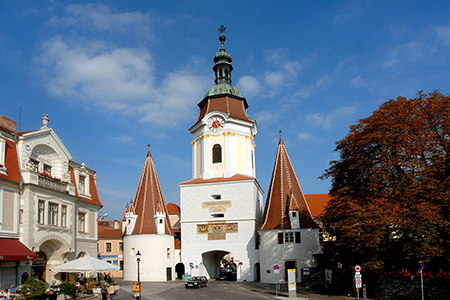
About a month from now my wife, daughter and I will be in Krems, Austria, a smallish city on the Danube about an hour upriver from Vienna. We’ll be joined there for a monthlong artist residency by about a dozen artists, including a Japanese architect, two artists from Romania, a musician from Brazil, and other artists from Montenegro, Belgium and Lithuania, along with one yet to be determined writer. We’re all strangers to one another, and all there to participate in one of the odder phenomenon of the contemporary art scene, the artists’ residency. It’s a situation where, independently of one another, a group of cultural professionals variously apply for and are selected to go somewhere for a set period of time to sort of work, think, interact, experience their new environment, do a little networking, and see a part of the world with which they might not be familiar. (I’ve actually been to Krems — a few decades ago two colleagues and I took the river cruise up the Danube from Vienna to Melk, which docked both ways at Krems for about ten minutes. I didn’t get off the boat, but do remember looking at the town from its small harbor.)
A lot of artists really enjoy pursuing these residencies — they thrive on the stimulation of meeting new artists in this curious social/working setting, how spending a few weeks somewhere really sears it in your memory and lets you occupy it in a way far different than the usual touristic rush. You usually have separate apartments/working spaces (as we will in Krems) and collective activities (artists’ talks, group meals, optional field trips) are kept at a minimum (artists’ residencies are for professionals, not students). But you usually find a few simpatico souls who you end up socializing with and often they remain collegial friends for life. You’re always running into one another in the halls and the common rooms, in local restaurants, or perhaps one of my fellow residents will be traveling with someone around my daughter’s age. Even in a month one will encounter and engage a sympathetic personality or two. Some of the staff at Krems will probably become part of my extended cultural family. These are arts professionals there to facilitate your stay, and over the years they have encountered every possible situation that might confront or challenge a group of people suddenly thrown together.
I’m not an artist; I write and teach art history, and my application for the Krems residency didn’t set up too specific a program for my time there. There are some things in Vienna I need to see again, and certain aspects of Austria that relate to larger issues about regionalism that interest me. So for me, my time there will be closer to a sort of ‘think-tank’ experience, and while the prospect of sitting in an outdoor café sipping white wine on some sultry Krems summer evening sounds more idyllic than intellectual, I am going to get some work done. But there’s only so much about this that I can anticipate. The excitement in receiving an artists’ residency is that while it’s clearly going to be an artcentric experience, peopled by individuals with more or less corresponding interests, you just don’t know what it will be like until you get there. Who knows, maybe the musician from Brazil’s conceptual practice will play the tuba from 2 to 6am every night, and he or she is in the next apartment from mine.
In a way, it all reminds me of Thomas Mann’s "The Magic Mountain," a book too few people read anymore. It’s an excruciating read, the first hundred pages so glacially slow moving that, like one’s first dip into Proust, it’s almost a test of your endurance. Then suddenly you’re hooked, and the doings of this rather pedestrian group of individuals, mostly patients and their keepers at a sanatorium in the Alps, becomes mesmerizing. The book is about a lot of things, but it’s largely about the processes of how individuals acclimatize to a new environment, how people adhere and adjust to its rules and rhythms, how strangers thrown together begin immediately to form complex relationships, public and private, and find ways to connect and get along.
People come, people go, the sanatorium abides, the little and sometimes larger dramas of human lives played out against the almost immovable routines of the place. Hans Castorp, the ‘protagonist’ of Mann’s novel, remains in the sanatorium for seven years; I’ll be in Krems for a few weeks. But still, this is one of those moments when I think about what ‘Red’ Redding says at the very end of "The Shawshank Redemption": “I find I’m so excited, I can barely sit still or hold a thought in my head. I think it’s the excitement only a free man can feel, a free man at the start of a long journey whose conclusion is uncertain.”
